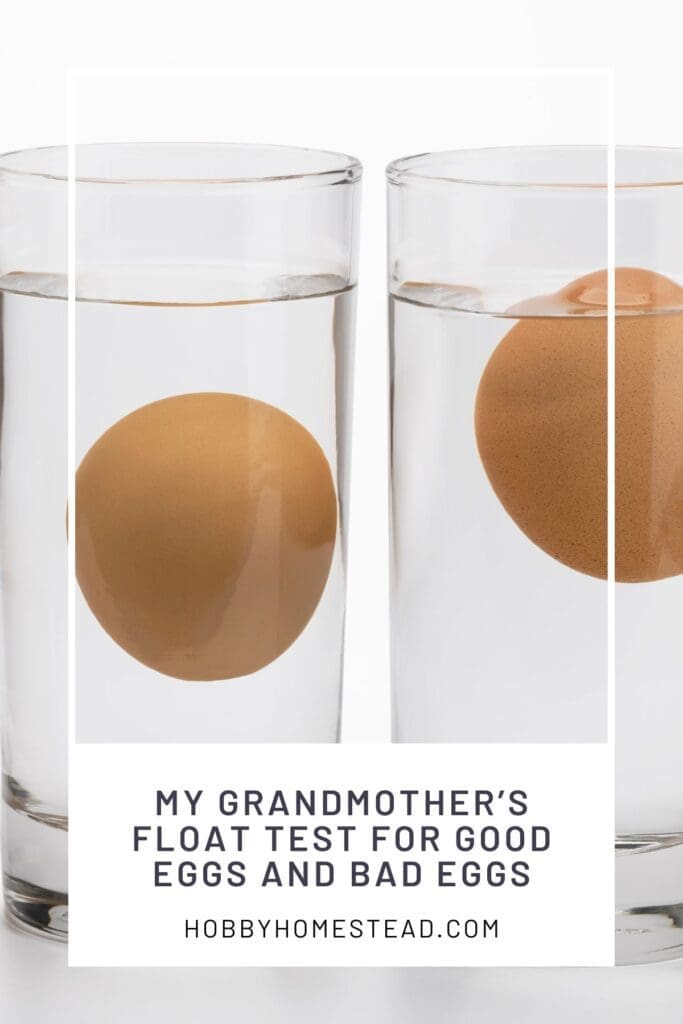Last updated on August 9th, 2024 at 01:41 pm
Yes, my mom’s mother, my grandmother used a float test for good eggs and bad eggs. On certain things, my grandmother had a knack for simplifying kitchen tasks. She rarely bothered with expiration dates, relying instead on practical methods, like the egg float test. This simple water test helps determine the freshness of eggs and is still one of the best ways to ensure your eggs are good.
When my mom was a teenager, her parents moved to a farm and of course, there were lots of chickens roaming freely. That means you need to find all the little hiding spaces for the eggs. Often, the hens were predictable and they always chose the same space. However, there were those few outliers that would find a new space. We had to know if those eggs were safe to use.

The Float Test for Egg Freshness:
Here’s how you can use the float test to check the quality of your eggs:
- Fill a Glass with Cold Water: Gently place a single egg in the water and observe what happens.
- Egg Sinks and Lies Flat: The egg is fresh. This is the ideal state for raw eggs and will give you the best quality for cooking.
- Egg Sinks but Stands Upright: The egg is older but still good. Use it soon, as the air cell has expanded, indicating a slight loss of freshness.
- Egg Floats to the Top: The egg is past its prime. An egg that floats may be a rotten egg, but it’s not always a bad egg. Check for small cracks or an unpleasant odor before discarding. A floating egg might still be safe to use if it passes the sniff test.
Why the Float Test Works:
Egg shells are porous and allow moisture and carbon dioxide to escape over time. As the egg ages, the air pocket inside grows, causing the egg to float. This is a reliable way to gauge the approximate age of the eggs.

Additional Checks for Egg Freshness:
- Sniff Test: Crack the egg open on a clean plate. If it has a sulfurous smell or any foul odor, it’s a clear sign of bacterial contamination or spoilage. Fresh eggs have no unpleasant odor.
- Visual Inspection: Look for signs of discoloration, such as a green ring around the yolk or cloudy whites. These can indicate a spoiled egg.
Choosing and Storing Eggs:
To ensure you get the freshest eggs, follow these tips:
- Buy from Reputable Egg Producers: Check the Julian date or pack date on the carton of eggs for the freshest options.
- Inspect Egg Cartons: Look for any visible signs of damage or small cracks on the eggs before purchasing.
- Store Properly: Keep eggs in their original carton in the refrigerator at a consistent cold temperature. This helps maintain their freshness and prevents bacterial growth. If you have leftover cooked eggs, store them in an airtight container.
Using the float test, along with these quick ways to assess freshness, ensures you always use good eggs and avoid food safety issues. Whether you’re dealing with store-bought eggs or farm-fresh options, this reliable method helps you determine the freshness of an egg with confidence.


